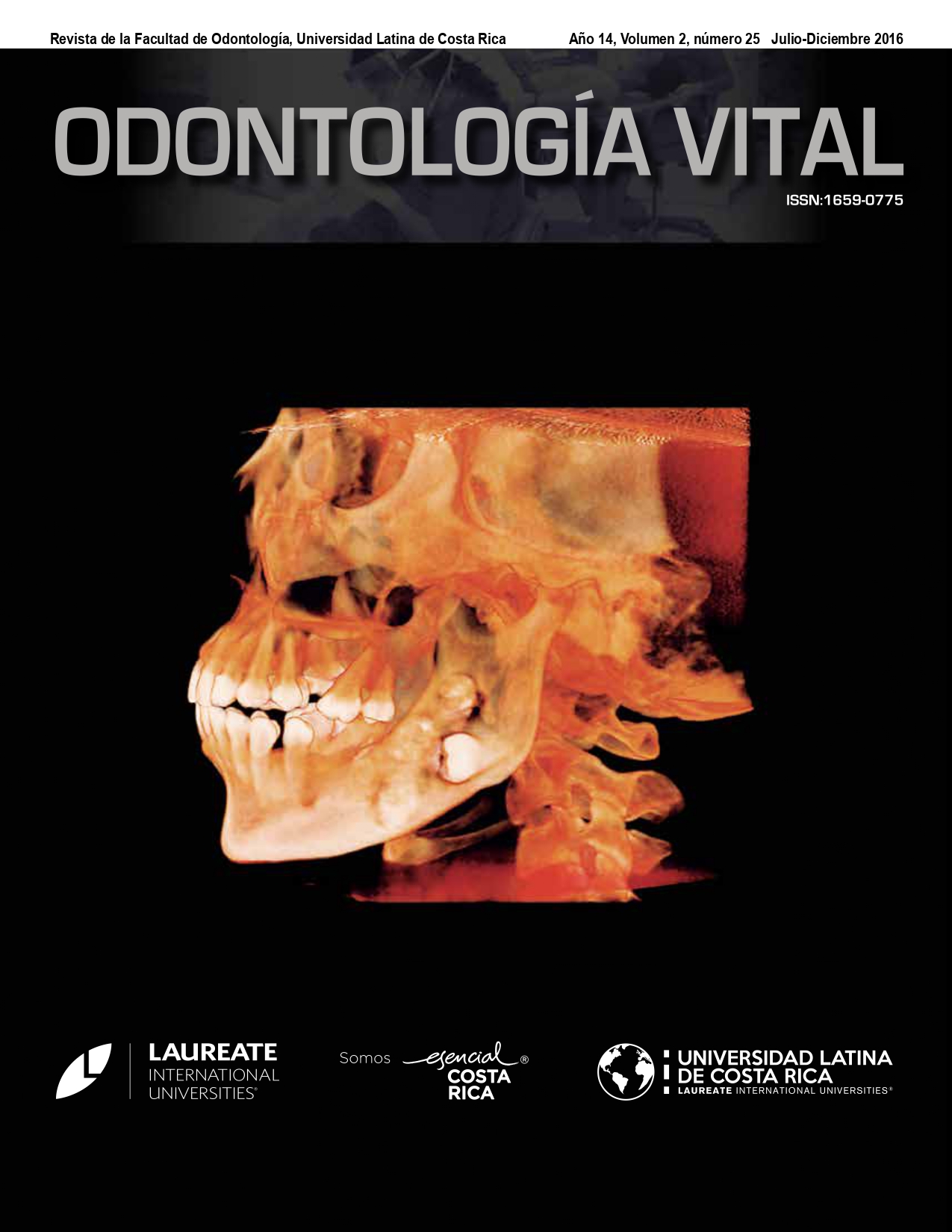Temperature increase on the tooth surface during photo-polymerization
DOI:
https://doi.org/10.59334/ROV.v2i25.240Keywords:
Light curing unit; LED; halogen; composite resin; thermal irritationAbstract
It is known that the heat is released during light-curing of dental materials, either by the light emitting source or by the polymerization reaction of the compound used. This temperature increase is transmitted to tissues, which may have an effect on them. Due to this, a comparative study of the temperature reached during the sealing and reconstruction of teeth In vitro was performed, using light-curing lamps from the type quartztungsten- halogen (QTH), LED and lamps formed by 4 LEDs, analyzing their programming: Ramp Mode, Intermittent Mode, and normal: and clinical guidelines are proposed in order to reduce potential thermal risks to the pulp and supporting tissues.
Downloads
References
Baldissara, P., Catapano, S., & Scotti, R. (1997). Clinical and histological evaluation of thermal injury thresholds in human teeth: a preliminary study. Journal of Oral Rehabilitation, 791-801. https://doi.org/10.1111/j.1365-2842.1997.tb00278.x
Dogan, A., Hubbezoglu, I., Dogan, O. M., Bolayir, G., & Demir, H. (2009). Temperature Rise Induced By Various Light Curing Units Through Human Dentin. Dental Materials Journal, 253-260. https://doi.org/10.4012/dmj.28.253
Jakubinek, M. B., O’Neill, C., Felix, C., Price, R. B., & White, M. A. (2008). Temperature excursions at the pulp-dentin junction during the curing of light-activated dental restorations. Dental Materials, 1468-1476. https://doi.org/10.1016/j.dental.2008.03.012
Mousavinasab, S. M., & Meyers, I. (2011). Comparison of Depth of Cure, Hardness and Heat Generation of LED and High Intensity QTH Light Sources. European Journal of Dentistry, 299-304. https://doi.org/10.1055/s-0039-1698895
Oberholzer, T. G., Makofane, M. E., du Preez, I. C., & George, R. (2012). Modern High Powered Led Curing Lights and Their Effect on Pulp Chamber Temperature of Bulk and Incrementally Cured Composite Resin. European Journal of Prosthodontics and Restorative Dentistry, 50-55.
Pereira Da Silva, A., Alves Da Cunha, L., Pagani, C., & De Mello Rode, S. (2010). Temperature rise during adhesive and composite polymerization with different light-curing sources.Recuperado el 1 de setiembre de 2014, de Pub-MEd: http://www.ncbi.nlm.nih.gov/pubmed/20502430
Rajesh Ebenezar, A. V., Anilkumar, R., Indira, R., Ramachandran, S., & Srinivasan, M. R. (2010). Comparison of temperature rise in the pulp chamber with different light curing units: An in-vitro study. Journal of Conservative Dentistry, 132-135. https://doi.org/10.4103/0972-0707.71644
Santini, A., Watterson, C., & Miletic, V. (2008). Temperature Rise Within the Pulp Chamber During Composite Resin Polymerisation Using Three Different Light Sources. Open Dental Journal, 137-141. https://doi.org/10.2174/1874210600802010137
Su-Jung, K., Yoon-Jung, P., Sang-Ho, J., Jin-Soo, A., In-Bog, L., Byeong-Hoon, C., Deog-Gyu, S. (2013). Thermal irri-tation of teeth during dental treatment procedures. Restorative Dentistry & Endodontics, 105-112.
Zach, L., & Cohen, G. (1965). Pulp response to externally applied heat. Oral Surgery, Oral Medicine, Oral Patholo-gy, Oral Radiology, and Endodontology|, 515-30. https://doi.org/10.1016/0030-4220(65)90015-0
Downloads
Published
Issue
Section
License
Copyright (c) 2016 Douglas Jarquín Hernández, Silvia Bonilla

This work is licensed under a Creative Commons Attribution 4.0 International License.
Authors who publish with Odontología Vital agree to the following terms:
- Authors retain the copyright and grant Universidad Latina de Costa Rica the right of first publication, with the work simultaneously licensed under a Creative Commons Attribution 4.0 International license (CC BY 4.0) that allows others to share the work with an acknowledgement of the work's authorship and initial publication in this journal.
- Authors are able to enter into separate, additional contractual arrangements for the non-exclusive distribution of the Odontología Vital's published version of the work (e.g., post it to an institutional repository or publish it in a book), with an acknowledgement of its initial publication.
- Authors are permitted and encouraged to post their work online (e.g., in institutional repositories or on their website) prior to and during the submission process, as it can lead to productive exchanges, as well as earlier and greater citation of published work.







